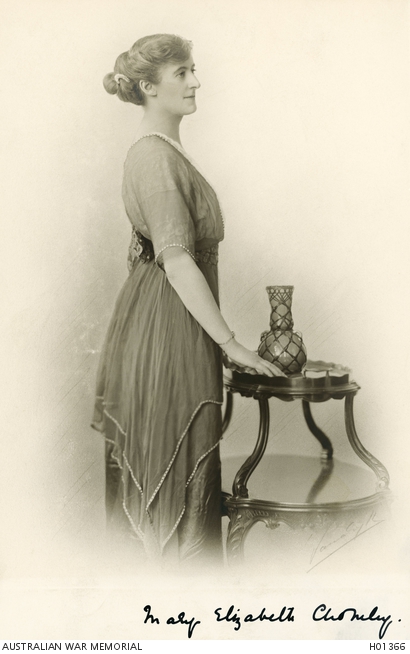Prisoners of war

"Hungry! Nobody unless they have been through the torture of starvation can realise what agonies are endured"
Private Raymond Ayres, 13th Battalion
Raymond Ayres was one of more than 1,100 Australians captured at Bullecourt, the most Australians taken in any battle of the war. The British blockade of German supplies caused shortages in food and clothing, which affected Germans and prisoners alike. The Australian Red Cross Prisoner of War Department supplied prisoners with parcels of food and supplies, which helped the men survive captivity.
Mary Elizabeth Chomley, Secretary of the Prisoner of War Department, was a link between prisoners and those at home. Miss Chomley and her team kept detailed records of where the men were and what they needed. From 1916 till the end of the war, thousands of food parcels were packed and sent to the camps.
Mary Chomley was born at Riddell’s Creek, a small town in Victoria, in 1871. When war broke out in 1914, she travelled to London to offer her services to the Red Cross. H01366
“Special parcels”
Private Herbert Horner of the 3rd Machine Gun Company was captured at Bullecourt. The Prisoner of War Department maintained contact with Horner and supplied him with regular parcels. Donations from Horner’s family and friends allowed the Red Cross to send him “special parcels of extra comforts”. This small basin was given to Horner by Belgian prisoners, and the identity discs were issued by his German captors.
Identity discs issued to Private Horner whilst he was a prisoner of war. RELAWM03900
“An unmistakable figure”
Douglas Grant had been adopted by a white family at the age of two in 1881. He enlisted in 1916, but was discharged because of regulations preventing Indigenous people from serving. He successfully re-enlisted, and while serving with the 13th Battalion was wounded and captured at Bullecourt in April 1917.
During his time as a prisoner of war in Germany, Grant, a talented artist, was of great interest to German scientists and anthropologists. One scientist described him as “an unmistakable figure” because of his dark skin and a Scottish accent, courtesy of his adoptive parents. He was elected Secretary of the British Help Committee, which put Grant in charge of receiving and distributing relief parcels.


